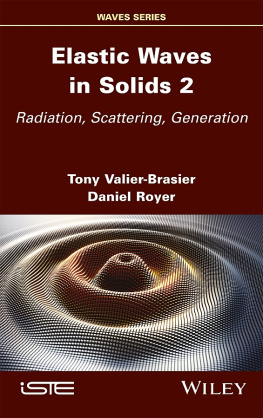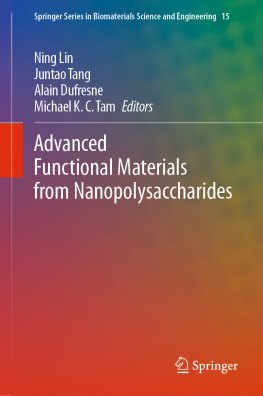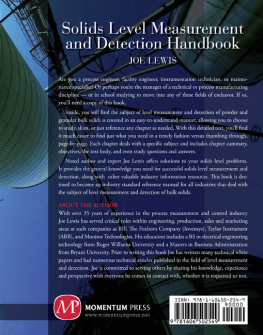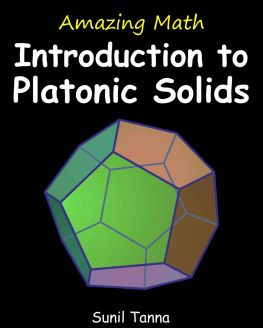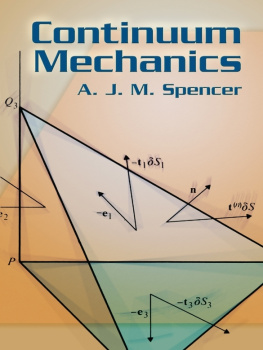
Table of Contents
List of Tables
- Chapter 1
- Chapter 4
- Chapter 5
- Chapter 6
- Chapter 8
List of Illustrations
- Chapter 1
- Chapter 2
- Chapter 3
- Chapter 4
- Chapter 5
- Chapter 6
- Chapter 7
- Chapter 8
Guide
Pages
Simulations in Bulk Solids Handling
Applications of DEM and other Methods
Edited by
Don McGlinchey

The Editor
Prof. Don McGlinchey
Glasgow Caledonian University
Department of Mechanical Engineering
Cowcaddens Road
G4 0BA Glasgow
United Kingdom
Cover Image: your/Shutterstock
All books published by WILEYVCH are carefully produced. Nevertheless, authors, editors, and publisher do not warrant the information contained in these books, including this book, to be free of errors. Readers are advised to keep in mind that statements, data, illustrations, procedural details or other items may inadvertently be inaccurate.
Library of Congress Card No.: applied for
British Library CataloguinginPublication Data A catalogue record for this book is available from the British Library.
Bibliographic information published by the Deutsche Nationalbibliothek The Deutsche Nationalbibliothek lists this publication in the Deutsche Nationalbibliografie; detailed bibliographic data are available on the Internet at .
2023 WILEYVCH GmbH, Boschstrae 12, 69469 Weinheim, Germany
All rights reserved (including those of translation into other languages). No part of this book may be reproduced in any form by photoprinting, microfilm, or any other means nor transmitted or translated into a machine language without written permission from the publishers. Registered names, trademarks, etc. used in this book, even when not specifically marked as such, are not to be considered unprotected by law.
Print ISBN: 9783527350100
ePDF ISBN: 9783527835911
ePub ISBN: 9783527835928
oBook ISBN: 9783527835935
Preface
The field associated with Bulk Solids Handling has always been open to a variety of science and engineering disciplines, and important contributions have come from Chemical, Civil, and Mechanical Engineering and Physics all have contributed to the growth in simulation methods and technologies. Arguably the most important development in the past 20years has been the progress in discrete element modelling (DEM) which has reached wide industrial use through commercially available codes, along with twofluid models and the integration with computational fluid dynamics and multibody motion codes. Options for the highfidelity simulation of bulk solids are now open to engineers with access to small HPC facilities or a reasonable workstation, and relevant software, both open source and commercial, can be accessed by all via an internet link through web services and cloud computing.
This book is intended to be of interest both to practicing engineers who may have had little or no exposure to the simulation of bulk solids during their formal education, and to graduate and postgraduate researchers in this area to provide background and perhaps a springboard for new ideas and areas for investigation. There is wide (and growing) use of simulation in science and engineering research, and industry practice; therefore, it is essential for students and practitioners alike to develop an understanding of relevant simulation techniques and methods. Knowledge of the capabilities and limitations of these techniques will lead to a better understanding of their potential to solve problems on various bulk solids handling applications and suggest potential research direction. Although covering the fundamentals in some sections, the book is not introductory in the sense of a first text in bulk solids handling or the discrete element method. However, the mathematics used in this book is generally undergraduatelevel calculus applied to the underlying physics involved in particle technology and bulk solids handling operations and should be accessible to graduate engineers.
A simulation of a bulk solids handling process or operation may be performed for different reasons, for example:
- to reproduce in a virtual environment the behaviours of a physical system so that such behaviours may be recorded.
- to generate simulated behaviours which can be used as ideal behaviours of a perfectly wellbehaved physical system to aid identify degraded performance or problems.
- to predict problems, e.g. erosion, before they occur on a physical system to allow mitigating action.
- to validate design or operational choices in the virtual environment before instantiating in a physical system.
- as the basis for the development of a reduced order model to form a component of a Digital Twin of the process or operation.
The bulk solids handling operations and areas covered include chute design, belt conveying, pneumatic conveying, scoops and grabs, port side operations, pharmaceuticals, particle shape, and simulation calibration.
summarises different DEM calibration philosophies, the most important DEM parameters of the most commonly used contact models, as well as different calibration tests to determine the DEM parameters efficiently and unambiguously.
discusses the main relevant aspects of transfer chute design to minimise problems in practice and shows how simulations can be used to improve the design. Modelling and evaluation issues for typical transfer chute problems like the simulation of buildup, the determination of impact forces, and the prediction of belt mistracking, abrasive wear, and dust emission are presented.
In Finite and Discrete Element Methods are described to calculate the static and dynamic belt tensions within the conveyor belt during starting, steadystate running, and stopping, with the aim to improve performance and reliability of the system.
presents the developments in the use of coupled Discrete Element Method and MultiBody Dynamics (DEMMBD) in particlebased systems related fields with a particular focus on the applications in design of bulk handling and processing equipment.
outlines the fundamentals of gassolids flow in pipelines and details three simulation methods, Single and TwoFluid Models and combined CFDDEM. The principal theories and equations commonly available in commercial offtheshelf and open source software packages are given.
introduces different methodologies for computationally capturing erosive wear and particle breakage in pneumatic conveying. A detailed discussion of onedimensional twophase flow modelling of the industrial conveying pipeline for particle breakage and erosion prediction, including the algorithm for breakage and erosion modelling, is included.
presents a brief introduction of DEM modelling, including principles, parameter calibration, and model validation, and its application in pharmaceutical processing. For this purpose, an overview of DEM modelling of several key unit operations in pharmaceutical manufacturing, including powder mixing, continuous blending, twin screw granulation, die filling and dry powder inhalation, is presented.
covers recent code optimisation for the contact force calculation with arbitrary body shape, parallelisation performance, and discussion of results showing both deformable and rigidbody versions of the code in the application of cube packing.
Next page


